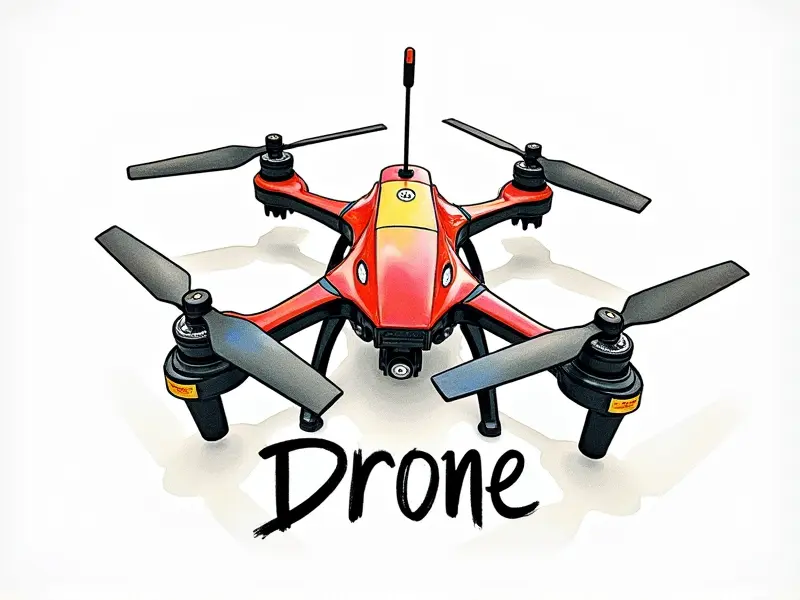Drone propeller size guidelines

Guide to Selecting Drone Propeller Sizes
Selecting the right propeller size for your drone is crucial for achieving optimal flight performance, stability, and efficiency. The propeller's size directly impacts factors such as lift, thrust, battery consumption, and overall maneuverability of your aircraft.
Best Propeller Sizes for FPV Racing Drones
FPV (First Person View) racing drones require propellers that can deliver high-speed performance with quick response times. Common sizes range from 45mm to 60mm, but the exact size depends on your drone's frame and motor specifications.
- Small Frames: Use smaller props like 45mm or 50mm for faster acceleration and tighter turns.
- Mid-Size Frames: Opt for medium-sized props around 51mm to balance speed and stability.
- Larger Frames: Larger props such as 54mm or 60mm provide more thrust for high-speed racing.
Optimal Prop Size for RC Drones
The optimal propeller size varies based on the specific use case of your drone. For general multirotor applications, consider these guidelines:
- Small Multirotors (250mm and below): Use props ranging from 45mm to 51mm.
- Mid-Size Multirotors (300mm - 400mm): Opt for props between 50mm and 60mm.
- Larger Multirotors: Choose larger props like 74mm or 82mm for increased lift capacity.
Choosing the Right Prop Size for Your Drone
To determine the best propeller size, consider factors such as motor type (KV rating), frame design, and intended use:
- Motor KV Rating: Higher KV motors require smaller props to maintain optimal RPMs.
- Frame Design: Frame dimensions dictate the maximum propeller size that can fit securely.
- Purpose of Use: Racing drones need different sizes compared to aerial photography or inspection drones.
Understanding Drone Propeller Dimensions
The two primary measurements for drone props are blade pitch and diameter. Blade pitch refers to the angle at which a propeller's blades are inclined, affecting thrust generation. Diameter indicates the overall size of the propeller.
- Pitch: A higher pitch value generates more lift but requires more power.
- Diameter: Larger diameters provide greater lift capacity and stability at lower RPMs.
Propeller Sizing Tips for RC Quadcopters
Selecting the correct prop size ensures your quadcopter performs efficiently under various conditions. Here are some tips to help you choose:
- Battery Capacity: Larger props consume more power but offer better lift and stability.
- Motor Efficiency: Match the motor's KV rating with the appropriate propeller size for optimal performance.
- Flight Conditions: Adjust prop sizes based on wind conditions, altitude, and payload weight.
Maximize Efficiency with Proper Propeller Size
Selecting a propeller that matches your drone's specifications can significantly enhance its efficiency. Consider these factors to maximize performance:
- Battery Life Extension: Smaller props reduce power consumption, extending flight time.
- Thrust-to-Weight Ratio: Optimal prop sizes ensure your drone achieves the best lift-to-weight ratio.
- Propeller Material: Choose lightweight materials for improved efficiency and reduced weight.
The Impact of Prop Size on Drone Performance
The size of a propeller has a direct impact on multiple aspects of your drone's performance, including:
- Lift Capacity: Larger props provide more lift for carrying heavier payloads.
- Thrust Generation: Smaller props generate higher thrust at lower RPMs compared to larger ones.
- Battery Consumption: Propeller size affects how quickly your drone consumes battery power during flight.
Propeller Guide for Quadcopters & Helis
Different types of drones, such as quadcopters and helis, require specific prop sizes to achieve optimal performance:
- Quadcopters: Use symmetrical props designed for multirotor stability and maneuverability.
- Helicopters: Choose asymmetrical props tailored for vertical lift and forward flight capabilities.
Best Practices for Drone Propeller Selection
To ensure your drone operates at peak efficiency, follow these best practices when selecting propellers:
- Consult Manufacturer Guidelines: Follow the manufacturer's recommendations for optimal performance.
- Benchmark Performance: Test different sizes to determine which provides the best balance of speed and stability.
- Maintain Balance: Ensure all props are identical to maintain balanced flight dynamics.
Quick Tips for Picking Drone Propellers
Simplify your propeller selection process with these quick tips:
- Start Small: Begin with smaller props and gradually increase size as needed.
- Consider Material: Opt for lightweight materials like carbon fiber or plastic for improved performance.
- Check Compatibility: Ensure your chosen propellers are compatible with your drone's frame and motor specifications.
Conclusion
Selecting the right propeller size is essential to maximizing the efficiency, stability, and overall performance of your drone. By considering factors such as motor KV rating, frame design, intended use, and flight conditions, you can choose props that optimize lift capacity, thrust generation, and battery consumption.

